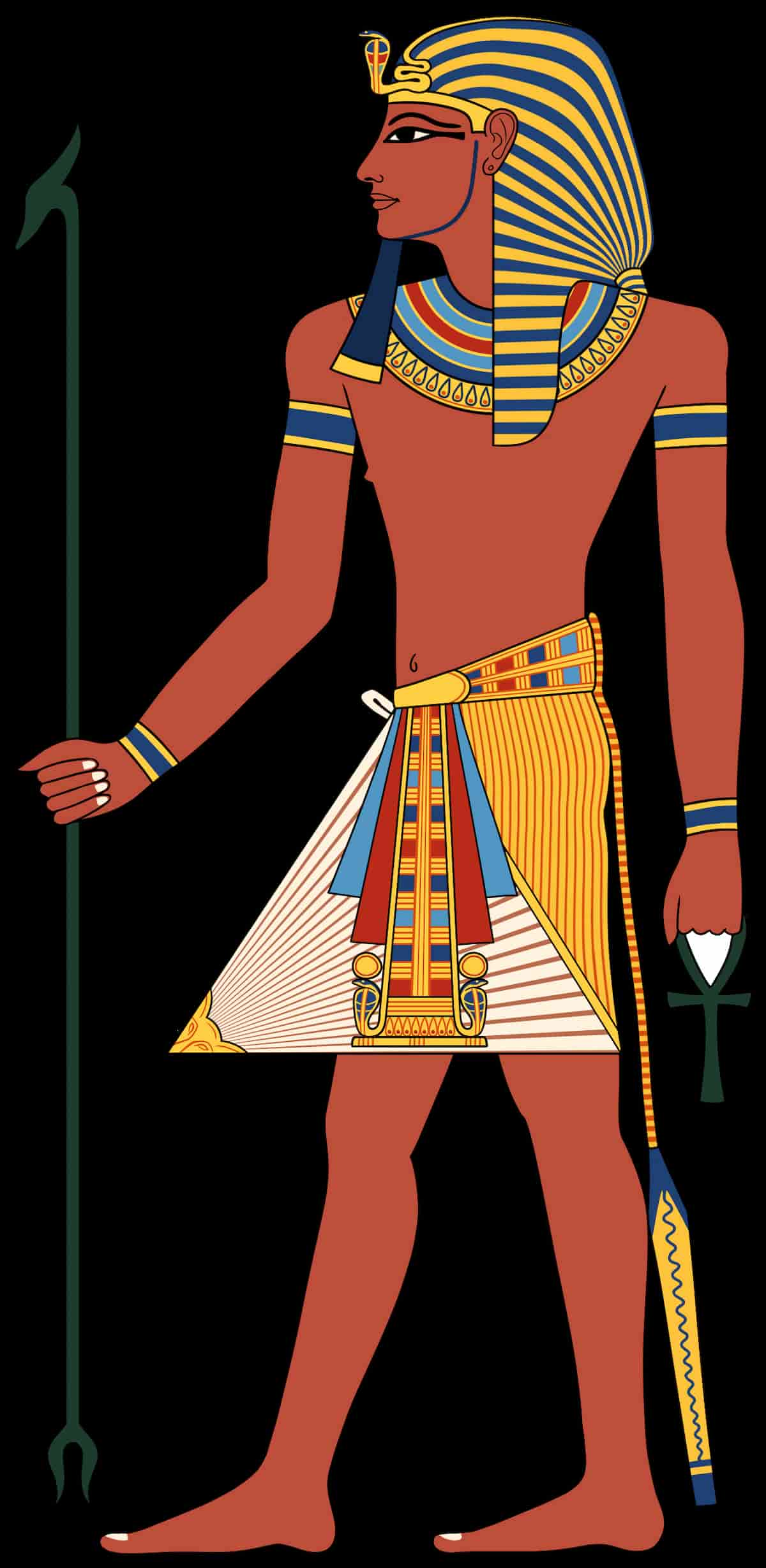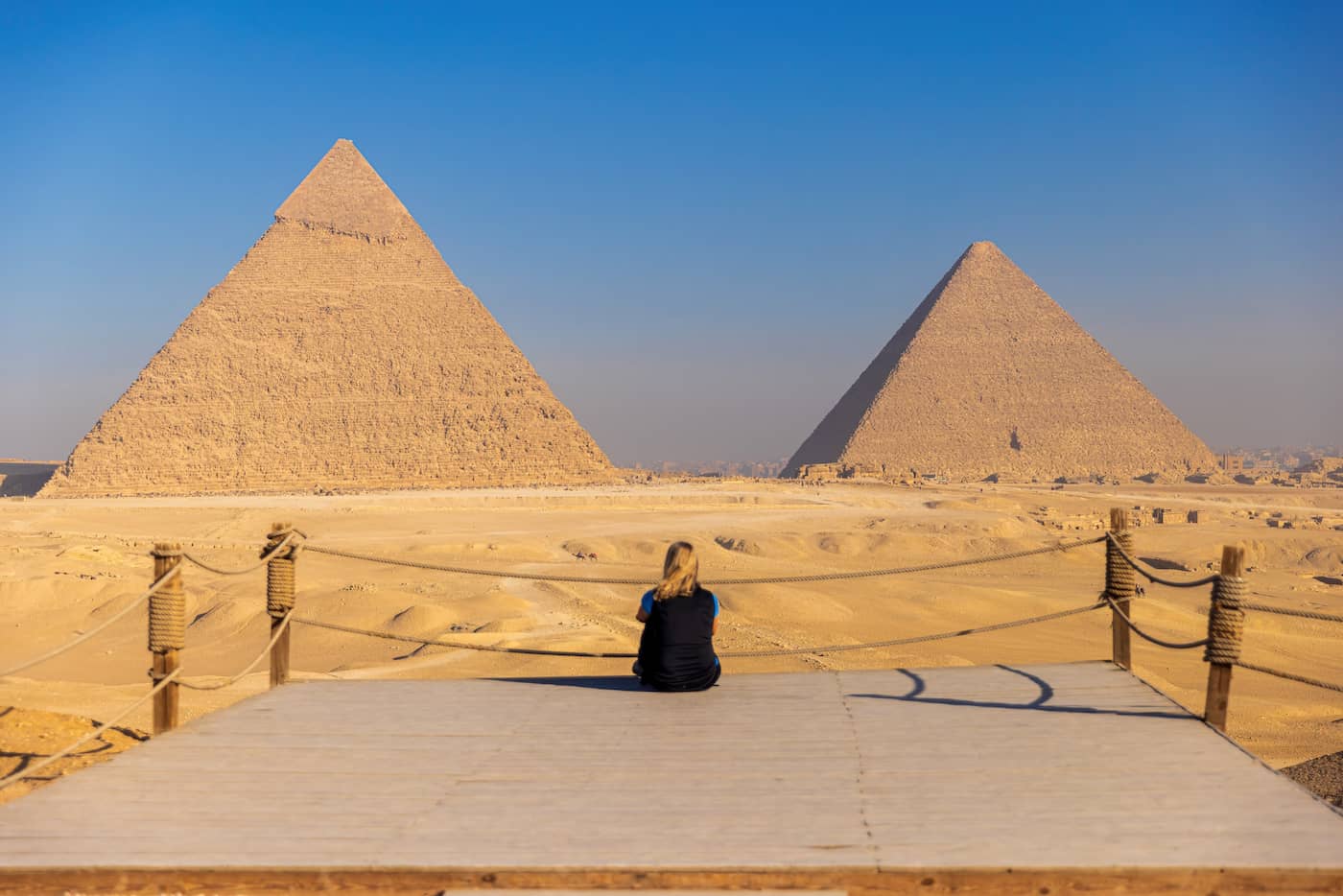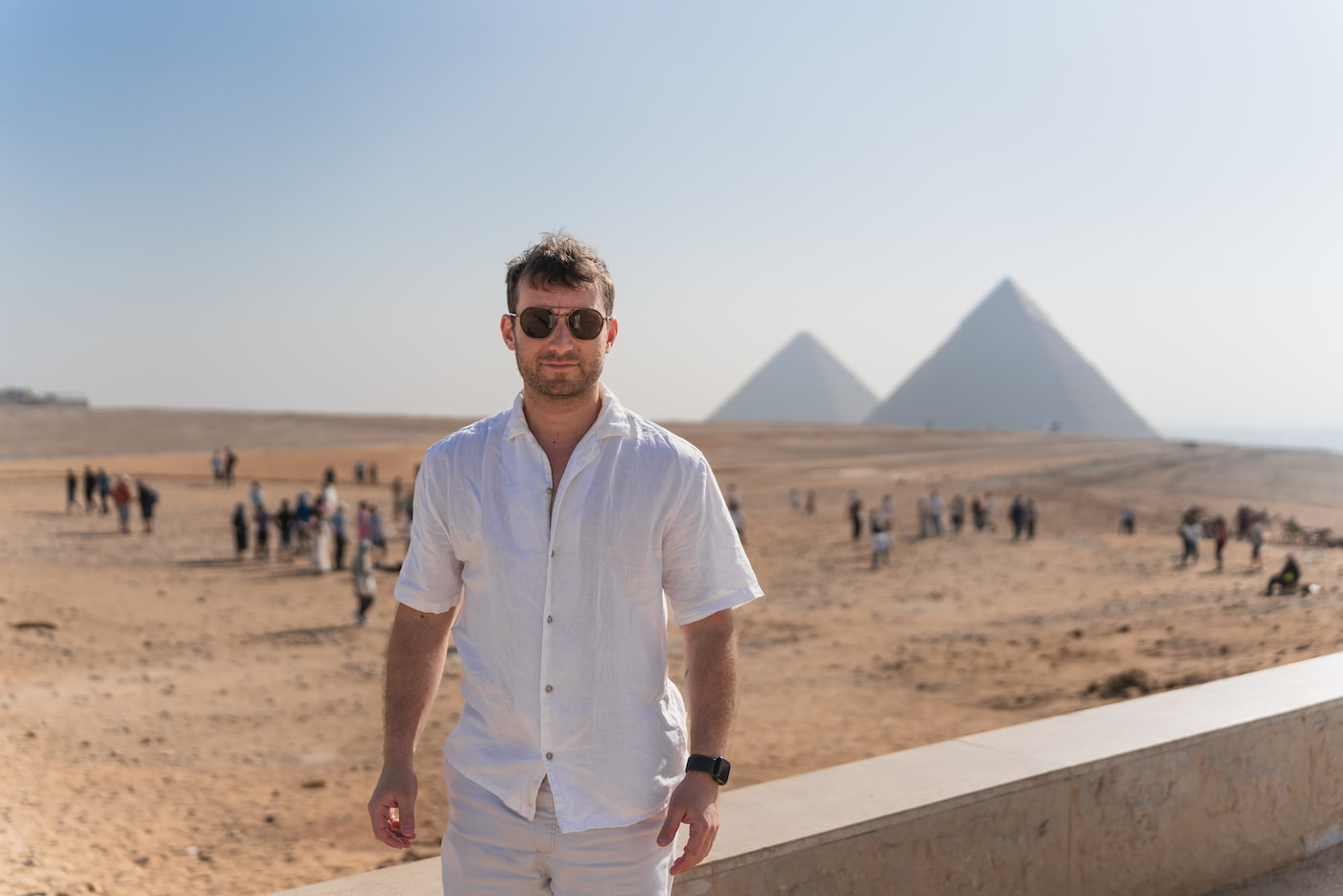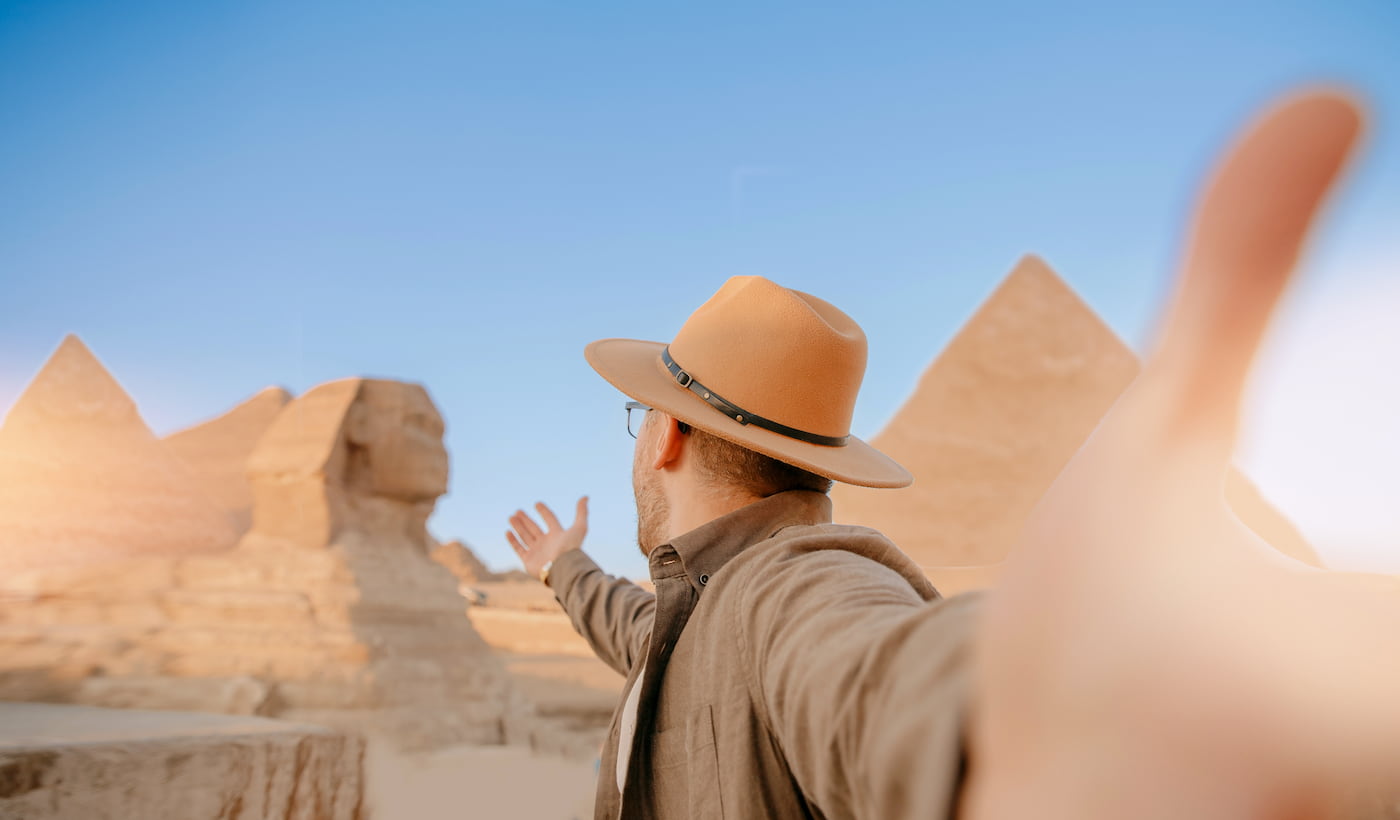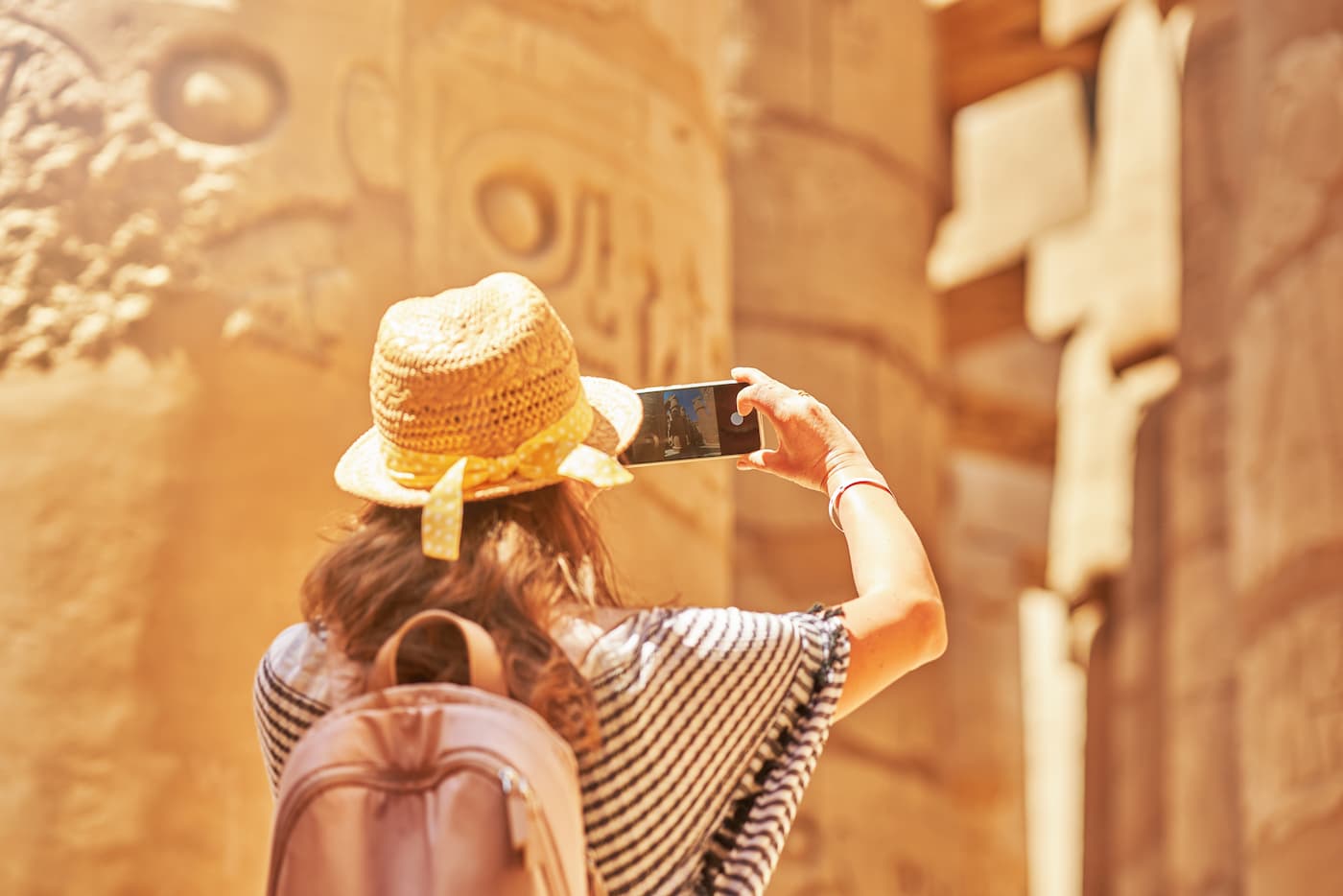Pharaohs of Ancient Egypt: Gods, Kings, and Legends of a Timeless Civilization
From the Bronze Age to the Iron Age, the royals of Ancient Egypt have forever enthralled and mystified humanity. These very potent rulers weren’t just kings; they were considered living gods who commanded vast empires and built monumental structures, such as the pyramids, for over 3,000 years, seeming to have been the very impetus of civilization. Histories of power, religion, innovation, and memory from the bringing together of Upper and Lower Egypt under Narmer to the spectacular reign of Cleopatra VII, the stories of the Pharaohs of Ancient Egypt.
Yet what were those people behind those golden masks and towering sculptures? What were the real roles that they played in ancient society, and how did their legacy survive thousands of years even after the end of their dynasties? Here we will travel through the timeline, achievements, beliefs, and very amazing personalities of the pharaohs of Ancient Egypt, to finally set straight the myths and look at their impact on the world.
1. What Is a Pharaoh?
The ancient word for pharaoh, derived from the Egyptian term, per-aa, means “great house.” Originally, the term only referred to the royal palace; however, by the New Kingdom period (circa 1550 BCE), it was also used to refer to the ruler who lived therein. The result is that the term in every sense came to be used for the King of ancient Egypt, despite the individual having a far greater stature than that of an ordinary monarch.
The pharaoh was, in other words, the highest ruler of Egypt, wielding an absolute degree of political power alongside that of a religious nature. The political leader was ordered to govern the people and land, promulgated laws, collect taxes, regulate agricultural output, and conduct foreign affairs. As a ruler, the pharaoh was Horus in life and son of Ra in a religious sense, charged with maintaining the divine order of truth, justice, and cosmic balance-who would ensure that prayers and offerings to the temple never ceased.
He held supreme command of the armies, preserving the territorial integrity of Egypt and conducting military operations beyond its borders in the enlargement of the empire. Though there had been some modifications in the exercise of royal power in various ways from the Old Kingdom to the Ptolemaic dynasty, the bond of the pharaoh as divine king acting between gods and man, and protector of Egypt, had never been compromised.
Was the pharaoh, then, a king? Quite a lot, for he was the living god on Earth in Ancient Egypt.
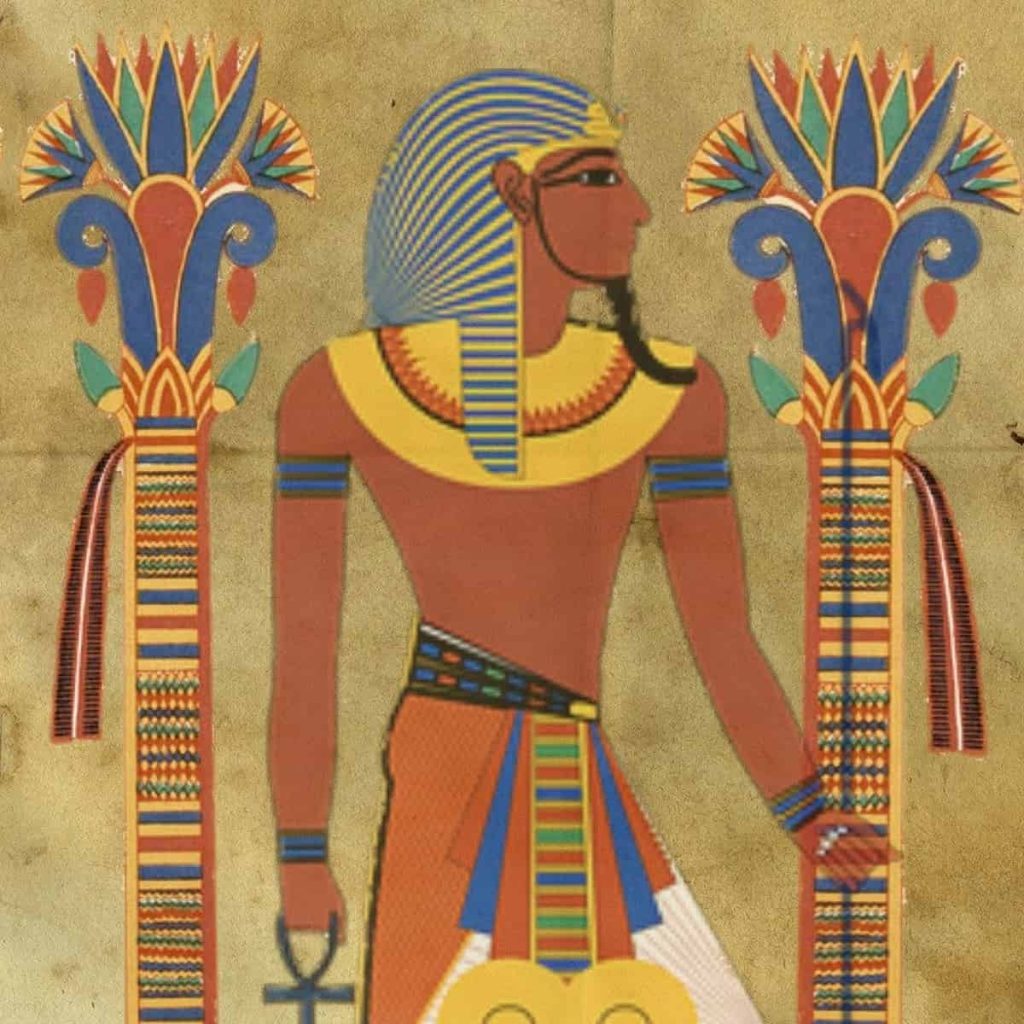
2. The Timeline of Pharaohs: Dynasties and Eras
The timeline of Ancient Egypt pharaohs is equivalent to around 3,000 years, with an aggregate of 31 dynasties in history emanating in three historical intervals, namely the Old Kingdom, the Middle Kingdom, and the New Kingdom. These periods should cover the times ruling during the Ancient, AC, fallary, touch atrax, dynastic rise, and fall. The Old Kingdom was established somewhere around the middle of 2686-2181 BCE, known as the “Pyramid Age,” and, for the first time, pharaohs such as Djoser made the first Egyptian step pyramid and Khufu fashioned the fabulous Pyramid of Giza.
The Middle Kingdom began relatively calm and expanded from 2055 to 1650 B.C. A few pharaohs, such as Mentuhotep II and Senusret III, managed to smooth and extend centralized authority in Egypt through their reigns. The periods of the rule of Hatshepsut, Akhenaten, Tutankhamun, and Ramses II, full of military expeditions and temple constructions, still belong to Egypt’s golden age during the New Kingdom (c. 1550-1077 B.C.).
A total of about 170 pharaohs ruled Egypt throughout its history, starting from Narmer, the first consolidator, to Cleopatra VII, the last of the pharaohs preceding Roman rule. Thus, a perfect mastery of the dynasty would lead us to relish the full growth of kingship and the culturally durable legacy of the pharaohs of Ancient Egypt.
3. Famous Pharaohs You Should Know
-
Narmer (Menes): First pharaoh
The unifier of Upper and Lower Egypt around 3100 BCE, probably forming the first pharaonic territorial organizations. His reign marked the dawn of a new age in Egypt central view, with Memphis as his capital. The most famous document of Narmers’ career as attributive pharaoh of the unification of Egypt, wearing both the crowns and the horns of Egypt, was the Narmer Palette, which places it within the narrative of unification and conquest.
His work would be seen in the establishment of the divine kingship, on which were based later all pharaohs; for that matter, the setting in power of the political and religious systems proved important for the country. Since specific records are that much less available, his image goes on even now as a person of legend, who must have made way for the one Golden Age of the country in terms of culture, architecture, and governance.

Narmer Palette
-
Hatshepsut: Female pharaoh
Hatshepsut succeeded in becoming the pharaoh during the reign of the Eighteenth Dynasty, belonging to the New Kingdom of c. 1479–1458 BCE. She was one of the female pharaohs in ancient Egypt. At the start, Hatshepsut acted as a regent to her stepson. Later, she became the pharaoh and is remembered for her developed and peaceful reign. Among Hatshepsut’s achievements were long-lasting structures, the most famous of which is her mortuary temple at Deir el-Bahari, with its impressive architecture and beautifully designed reliefs.
She had also enhanced trade through her Punt expedition that brought the rich and strange wares to Egypt. Hatshepsut donned male pharaoh apparel to dissent from the prevalent male domination in society, thus legitimating her rule as queen. Economic growth, great achievements in art, and political stability remained the markers of the reign of Hatshepsut and even broke the norms that had established royal powers while summoning her authority.
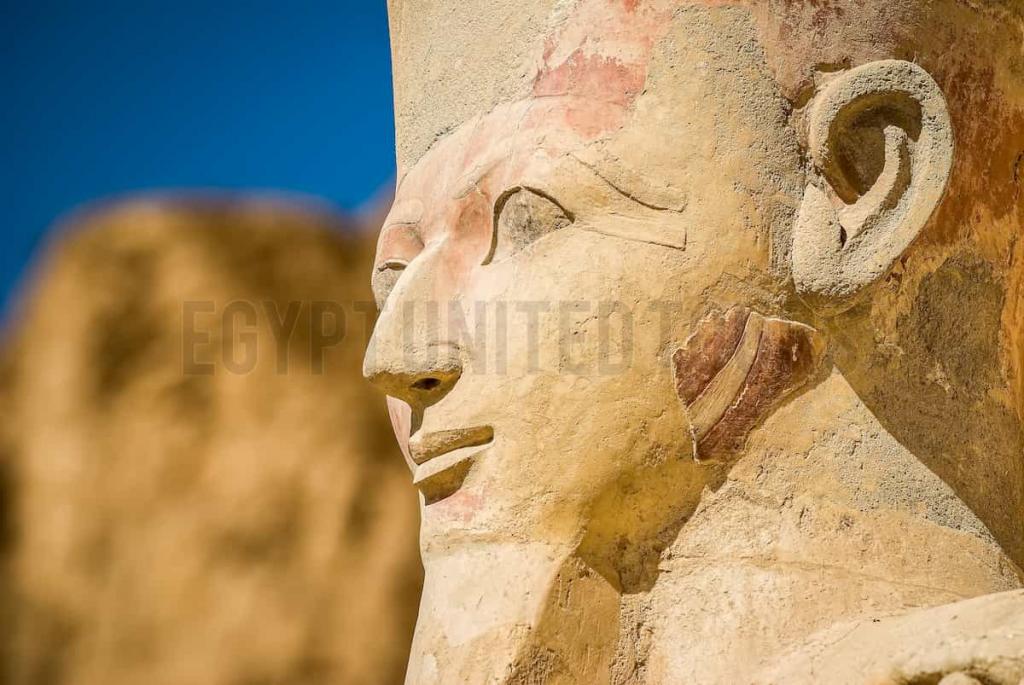
-
Djoser
Pharaoh Djoser served as a ruler in Egypt during the Third Dynasty around 2670 BCE. His step pyramid is famous in Egypt history and the whole world, representing the oldest colossal stone building. This was designed by his architect Imhotep, marking a revolution in the funerary architecture from the traditional mastabas into a pyramid.
It is stated that Djoser’s rule was the serene period of political and cultural maturity in the Old Kingdom, during which he equipped the central government and himself by the execution of larger building projects and religious rites by which the status of a supreme being was also applied to the king. Imhotep himself later became a god of wisdom, and this was the measure of Djoser’s contribution. The Step Pyramid remains revered for its grandeur, and in terms of becoming an example of the evolution of the monumental architecture of Egypt.

-
Thutmose III: Warrior king
Thutmose III (r. c. 1479-1425 BCE), often called the ‘Napoleon of Ancient Egypt’, was a warrior of a powerful pharaoh who fought in the New Kingdom of the Eighteenth Dynasty. He co-ruled with Hatshepsut and then set out on several military campaigns, which greatly enlarged Egypt’s dominion towards Syria, Nubia, and even beyond. He had the encroachment of a superpower in the Near East during his regime. Thutmose III was a great administrator and builder: he enlarged many temples and monuments by a series of additions, among which was Karnak.
Military prowess and the leadership potential enhanced Egypt’s borders and wealth, ushering in the most prosperous era. War-time records, well preserved, would show how he was able to beef up and protect the wealth. The records indicated numerous peaceful times for the coming days; Thutmose III founded an empire that included Syria, Nubia, and numerous additional parts of Africa, which shone with brightness in his eyes and through flame which his heart. His literary and imposing battle records are those of a king who has combined warfare with religious devotion, the essence of a king-warrior and pharaoh.
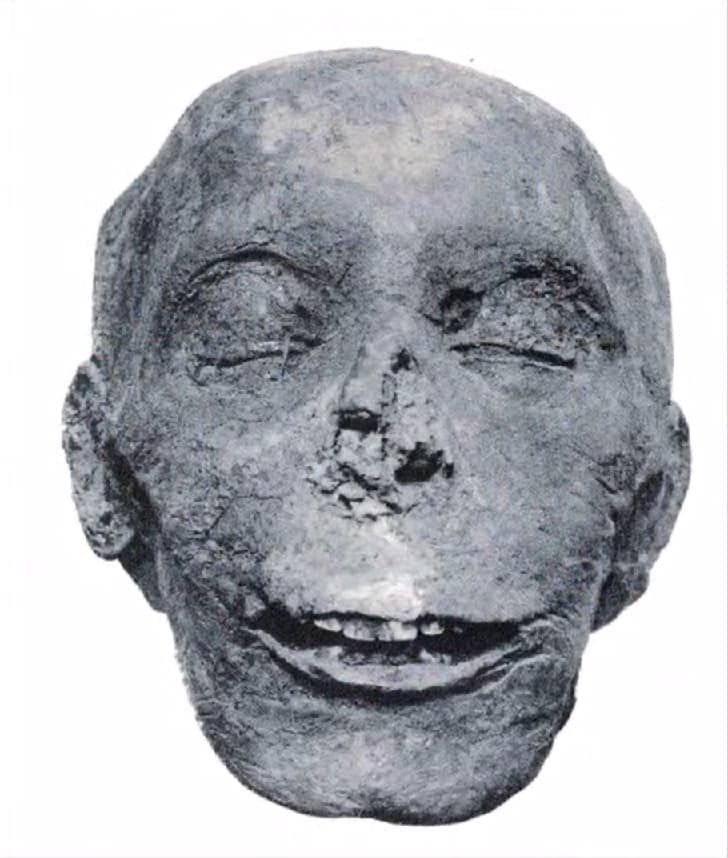
-
Akhenaten: Religious reformer
Akhenaten was born a child of seventeen years (ranging from 1353 to 1336 BCE) as Amenhotep IV, and he is famous for bringing significant change to the religious atmosphere of Egypt. What was created by Akhenaten as a practice of faith was the worship of the Aten or the sun disk. This religion, begun in the capital he called Akhetaten in his time, and that is Amarna in our era, totally destroyed the tradition which was grounded on the polytheistic beliefs and powerful priesthood of Amun itself. For tradition opposed his regime, a collection of reversed changes occurred afterwards, and most of the time, more of these orders were not carried out and were almost destroyed.
Akhenaten’s art was also revolutionary, portraying the royal family in a new way, with exaggerated features in domestic scenes. After death, Akhenaten’s program was dissolved, his forgotten subjects went back to ancient practices, and therefore, the obliterated symbols and repressions. Angst for the promotion of his religious ideas hindered history and snuffed out all evidence of his reign. Akhenaten left to history a provocative age of innovation and turmoil that lingers in the history of Egypt. His legacy ultimately questions the traditional understanding of religion and kingship in Egypt by accentuating the intricate relations between power, religious faith, and art during the New Kingdom.
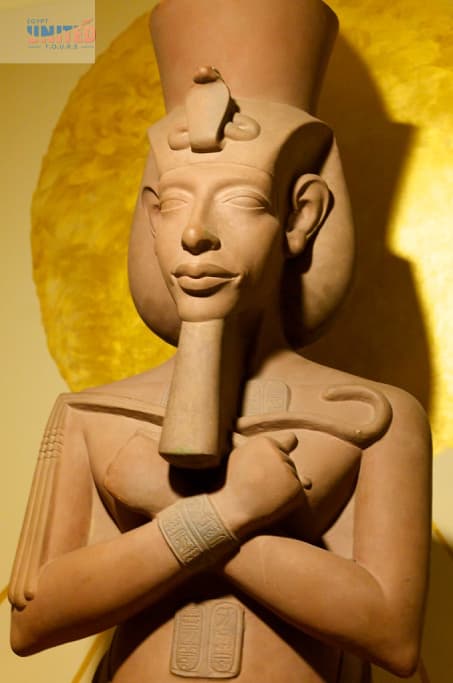
Akhenaten by joncallas
-
Tutankhamun: Boy king
Tutankhamun, also known as the “Boy King,” took the reins over as a child around 1332 BC at the end of the Eighteenth Dynasty. His reign was quite short and was politically less eventful than the brief average dynastic period from the time of his death. Although there were fewer politically explosive events during his eight-year reign, the most famous of all the pharaohs would surely be Tutankhamun-his tomb with all treasures intact was discovered in 1922 by Howard Carter.
That tomb, including the most famous golden death mask, contained a wealth of information about the New Kingdom burial religion and art. Tutankhamun managed to restore the faith of the kings of Egypt in the traditional pattern, having accommodated the monotheistic experience of Akhenaten, and once again started worshipping Amun and the gods during his reign. Though dead, his finding was still a crypt keeper for the global fascinations that all of a sudden attracted people toward Ancient Egypt, leaving the deepest footprints in archaeology and changing concepts of the ancient culture of those days.
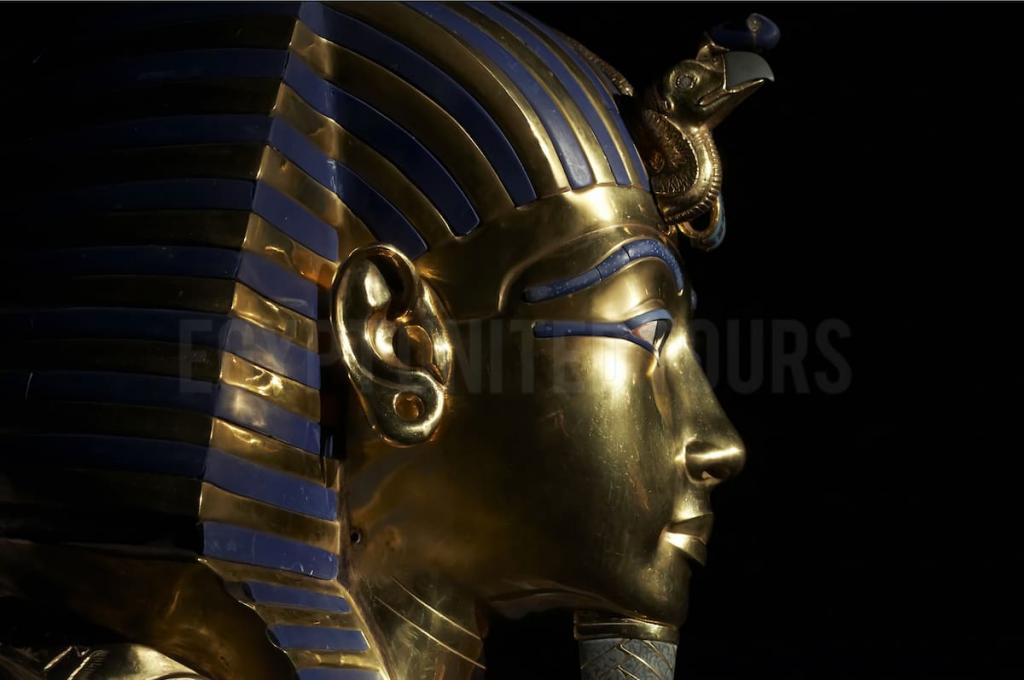
-
Ramses II: The Great Builder
The most well-known of all Egyptian Pharaohs in all of history is “Ramses II“. His reign lasted the longest of any Egyptian ruler, from 1279 to 1213 BC. He was the king of Egypt during the Nineteenth Century. He is known to have had the most military might and prowess as a leader. This is particularly why he wanted to assure his borders against invaders through his famous battle with the Hittites (Kadesh): One of the oldest peace treaties in history.
Ramses II was a brilliant builder as well, commissioning such colossal structures as the temples of Abu Simbel and expansions to Karnak Temple and Luxor Temple, while his reign was a time of peace following prosperity through the building of grand edifices and with worship of the gods. Each inscription and each colossal statue was supposed to project his power.
He appears to have left a lasting legacy as a warrior, administrator, and builder, and as the “greatest of all pharaohs who ever ruled Egypt.”

-
Cleopatra VII: The last pharaoh
The very last ruler of the Ptolemaic Kingdom of Egypt, she was an active Cleopatra VII in power from 51-30 BCE. The assimilation of Alexandrian Greeks with the Egyptian gods created a unique system of religion, assigning a special place to another undefeated Ptolemy, as if the practical achievements of their ancestors, or at least the cult of their queen-gods, had constituted for those Greeks a prior knowledge of Egyptian subjects.
Cleopatra, distinguished by her intelligence, political savvy, and charisma, spoke many languages and was able to bind together important alliances with two great Roman leaders, Julius Caesar and Mark Antony. It was a reign spent in an attempt to save Egypt in the face of ever-increasing Roman encroachment, however. Cleopatra’s melodramatic life, love affairs, and tragic death catapulted her personality up into one of the most celebrated female rulers of history.
Indeed, she set trends, introducing Egyptian culture into the Greek tradition while bringing about a revitalization of the economy and stability of Egypt. But beyond her unfortunate date with Roman power, Cleopatra’s symbolic legacy has endured as an ancient icon of strength, beauty, and political intrigue.
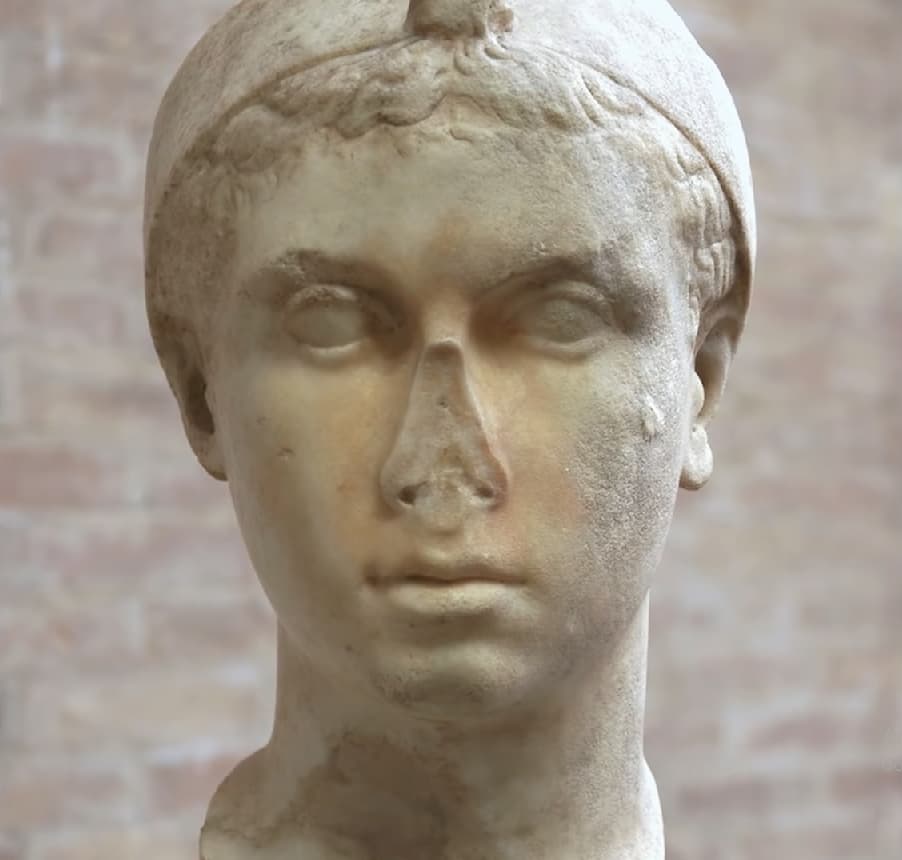
-
Khufu
Khufu, who was also Cheops, ruled during the period of the Fourth Dynasty (2589–2566 BCE) and was the individual most remembered for his creation of the Great Pyramid of Giza: one of the Seven Wonders of the World. This colossus served as his tomb and demonstrated amazing prowess in engineering and organizational skill. A ruler whose reign demonstrated strong centralized authority on a scale that enabled him to mobilize vast resources and labor, Khufu is reputed as one of the most famous pharaohs of antiquity.
Very little is known about his policies and his character-and the few records on him reveal a confused picture of his rule. Already a testament to his lasting memory, the grandeur of the Old Kingdom-the Great Pyramid still stands. It is hard for the monument, in fact, none much less for the visitor, to do otherwise, standing as it does by vocation among continental wonders as the climax of pyramid construction.

The Great Pyramid of Giza (Pyramid of Cheops or Khufu)
4. Life Inside the Royal Court
Ancient Egyptian pharaohs’ inner lives, with rituals, including a very strict hierarchy indeed. A simple glance can enable you to observe numerous pharaohs at once, as they are surrounded by family members, priests, advisers, scribes, and courtiers, as all of these people play a significant part in direct royal rule and the everyday order. These people are not just important solely for politics; they serve as a complete sign of the religious nature of the court and its great importance in law. The whole thing is wrapped in significance. Rituals and offerings all guarantee that the gods will behave favorably. Such dowtry line weddings helped preserve the bloodline of the dynasty while accessories, clothes, and cosmetics bespoke a person’s value and divinity.
Thus, one got a glimpse of how pharaonic luxury touched the divine, for activities included in the passage were, of course, ceremonies and the reception of foreign rulers, plus the administration of things in offices, and in between these solemn activities, banquets and hunting expeditions. How the pharaoh lived his luxurious life, as art could demonstrate a colorful banquet, to hunting expedition, to musicals. Everything displayed, in broad outlines, is perhaps testimony to the richness of the culture of the royal court. Understanding this now gives us a clearer picture of how the divine and this-worldly power met, as well as how such ideas were ongoing in the everyday and mundane activity of a pharaoh.
5. Religion and the Divine Role of Pharaohs
Noble was Pharaoh’s position in Ancient Egypt, for he was himself not merely a ruler who wielded power but an enlivened godhead through all religious belief and spiritual practice. The whole of Egypt believed that he was, in myth, the corporeal manifestation of Horus, the falcon-headed god of kingship, and also son of Ra, the sun god, when he died and united with Osiris, the god of the afterlife. This established him as progeny of the gods who endowed him legitimacy and obliged him to the observation of Maat, the divine order for settlement of the issue, being truth, equilibrium, and harmony.
The high priest in every temple was that pharaoh who did all the things that should be done solemnly, and he built temples, and so the gods were given all things. Religion, then, came not only symbolically but practically to involve the link between heavenly and terrestrial realms within its ideology and practices. Huge temples like Karnak, Luxor, and Abu Simbel were testimonies not only of a great political presence but also of what the Egyptians owned of spiritual pride, taking heaven to earth and vice versa. Religion fused with rulership to give the Pharaohs of Ancient Egypt incomparable power, determining how they governed the nation and, in the eyes of their subjects, preserving them as both protectors-concerned with emulation, and possessing sanctity.
6. Pharaohs and Monumental Architecture
The history of the pharaohs of ancient Egypt shows its uniqueness through their exceptional constructive architecture that attracts all world till now. The colossal monuments were everything but merely royal vanity, for themselves, these were expressions of divine power, political dominance, and eternal legacy. Temples or great statues belonging to gods, politics, thanks, and a certain immortality in the afterlife were built by the pharaohs in pure colossal dimensions.
Therefore, during the Old Kingdom time period, rulers such as Khufu ordered the construction of the Great Pyramid in Giza, which is a technical marvel of construction and had certain alignments with celestial bodies. The New Kingdom was then blessed with magnificent temples such as Karnak, Luxor, and the grand so-called cliff-ram shaped temples of Ramses II at Abu Simbel. Another fine architect is Hatshepsut, who built as a tomb her mortuary temple in Deir el-Bahari.
These works were created by master labor, not by slaves, put together in groups, and administered by a well-managed bureaucracy. These massive inscriptions indicate victories achieved, gods’ mercy, and royal lineage, enhancing the powers of the pharaoh by flaunting them as if they were of a god in the eyes. The horn of humankind’s grandeur is stuck on the age of antiquity; adding the ambition of its rulers keeps this beauty significant.
7. The End of the Pharaohs
The Pharaohs’ reign in ancient Egypt came to a slow conclusion after more than 3,000 years of dynastic rule; it was sapped by deadly internecine strife, invasions by foreigners, and new, more powerful forces taking over the world. Poverty and lack of unity posed risks to Early Egypt during the Late Period; one could observe the state subject to a series of takeovers: Nubians, Assyrians, and Persians. Although for a time, an indigenous king might reclaim power, he fell to the Macedonian general Ptolemy I, successor of Alexander the Great, in 305 BC. The Ptolemaic Dynasty, though consisting only of Greeks, adopted all the Egyptian modes in which the tradition of the double kingship continued in Egypt.
Then, at the end, Cleopatra VII, playing the last scene as the last queen, allies with Julius Caesar, and another alliance with Mark Antony, which will finally end in the most brutal warfare with Rome itself. A good cause of jubilation occurred when Cleopatra was defeated by Octavian (later named Augustus) in 30 B.C.: Egypt became a Roman province. With a defeat splendidly consuming another, once-great empire belonging to Africa, the authority of the Pharaohs was submerged after 3,000 years. Even the title of “pharaoh” itself had disappeared, but the memory of them was kept alive-in temples and tombs and language and myth-to shape generations.
8. Legacy of the Pharaohs in Modern Culture
Interesting to note that Egyptian pharaohs became part of the current world’s mark many years after their dynasties had fallen. The images of their height and narrow noses-twinkling eyes, and broad incisors, universal do fascinate a large part of the world. Their images, golden masks, tall statues, hieroglyphic-covered entombs, have been made so iconic by mystery, wealth, and ancient might, and the 1922 discovery of Tutankhamen’s grace by Howard Carter, that it somehow revived the avid interest the subject has always had since Egyptology became known, has not stopped till today. The world features probably many museums dedicated exclusively to their exposure of the pharaonic treasures, modern, and ancient.
Not a wonder a lot of documentaries, books, and films, anything from historical drama to fantasy epic, would draw from their biographies as Ramses II, Cleopatra, and Hatshepsut. In these legacies lie what modern tourism in Egypt is mostly about today, because the plenitude of humanity who come to experience the pyramids, the temples in the Valley of the Kings, and those of Luxor’s temples suggests it. These are seen, too, as influencing the modern era of fashion, art, and symbolism, as the images of power, leadership, and divinity. Yet, the ancient pharaohs remind us of this great civilization in human history, as well as one of the most enduring modern craftsmanship and popular culture.
9. Conclusion
The pharaohs of Ancient Egypt were more than mere kings. They were divine rulers, master builders and military commanders, and religious icons who had created a somewhat unequal civilization. They were destined by forces inside themselves or from elsewhere. It was the story of Narmer from his Nile unification to Cleopatra VII’s final dramatic stand over thousands of years, innovation, relentlessness, and legacy. Massive constructions, a rich symbolism of religious values, and an identity of cultures that keeps on fascinating people almost all over the globe.
Today, the impact they left behind on the earth is visible in the largest size of museums, through films and in history books, and an unending trail of great desert sands, particularly known as Egypt. To know them is to enter into their lives and to understand who they are better, might have built an empire that really recreated time. For they are a voyager, historian, or curious reader, in which pharaonic world, further and endless inspirational learning and discovery are always thrown right up.

